IG Farben Haus
From Nazi chemicals to the CIA, this architectural marvel has played a fascinating role in German history.
Walking up to the Poelzig-Ensemble, as the IG Farben Haus is officially called, you cannot help but feel impressed, which was very much what the architect intended. Now the main building of Frankfurt University, it was built as the largest office space in Europe for what was at the time the largest chemical company in the world. The mammoth structure contains still-in-use paternoster lifts and is architecturally fascinating.
The building radiates a sense of importance (or self-importance), owing to a plentitude of design features. Each floor of the seven-story building is of a smaller height than the one below it, thus making the overall building appear taller. The distinct shape of the building also plays a role; it is curved backwards on both ends, adding to the optical illusion of increased height.
Built from 1928 to 1930 by architect Hans Poelzig, it was designed as the headquarters for IG Farben, a giant German chemical conglomerate that was the fourth-largest company in the world at the time. The architect rejected the Bauhaus style of the era while still embracing a 1920s modernist design. Remarkably, many of the floors are still served by four banks of historic paternoster lifts, a dying breed of doorless elevators that travel up and down without stopping. They are still in service, despite almost being shut down after an accident and some ongoing safety concerns.
Not long after the building’s construction, IG Farben became heavily involved with the Nazis. They were responsible for creating Zyklon-B, the gas used in Holocaust death camps. A plaque in front of the building now commemorates the victims of the Holocaust. After the war, IG Farben was split up, in part due to its troubled history, in part due to antitrust concerns, and the building became property of the occupying forces. It served as the headquarters of the Allied Command in Europe, housing the German offices of General Eisenhower and the CIA. The round dining hall on the back of the building commemorates this time, as it is now called the Eisenhower Rotunda. At the time the building was nicknamed the “Pentagon of Europe.”
On May 11, 1972, three bombs were set off by the West German terrorist group Rote Armee Fraktion (Red Army Faction, i.e., the Baader-Meinhof Group). Two bombs went off in near the Eisenhower Rotunda and a third exploded in a smaller building behind the IG Farben building that was serving as the US Military’s officer’s club. Dozens of Americans and Germans were injured. The IG Farben building was attacked again by the same group in 1976 and 1982.
When Germany was reunited in 1990, the building was transferred to the state of Hesse. Its association with the Nazi party led to much deliberation about what it could be used for. It was felt that any official use of the building would be inappropriate, and it was therefore given to Frankfurt University. These days, it is the main building of the university’s Westend campus, the self-proclaimed most modern campus in Europe and most beautiful campus in Germany.
Update August 2019: The main banks of Paternoster lifts near the Eisenhower Rotunda are under technical review and may be reopened in the near future. Two other sets operate in the libraries at either end of the building, with entry from the first and third floors.
Know Before You Go
The area behind the IG Farben Haus has been expanded and multiple university buildings added. The campus is generally impressive and houses several good (and relatively cheap) cafes, as well as a beer garden in the summer.
The campus is easy to reach with bus lines 36 and 75, or from underground station Holzhausenstrasse. As a university building, the IG Farben Haus is relatively busy in between lectures (try to avoid the cafe), but otherwise surprisingly quiet.
Community Contributors
Added by
Edited by
Plan Your Trip
The Atlas Obscura Podcast is Back!




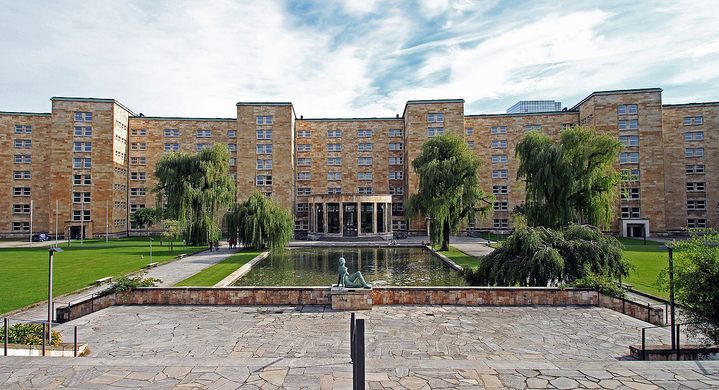
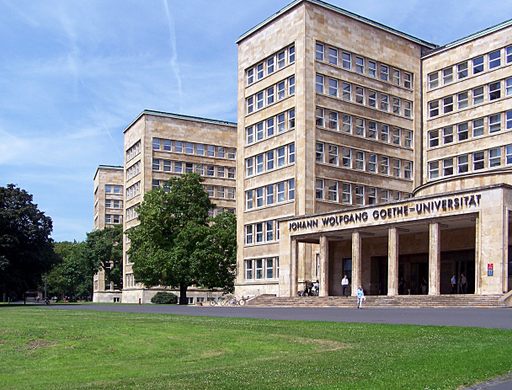
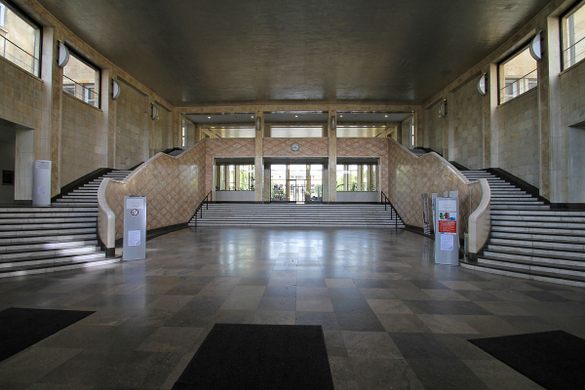

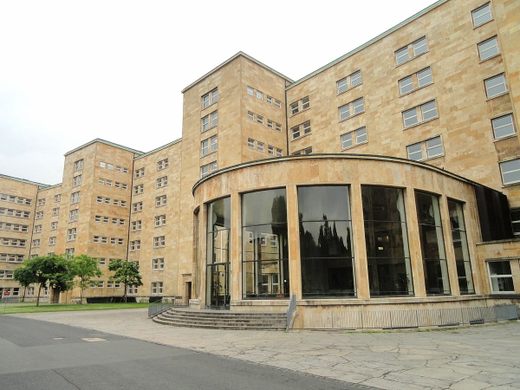



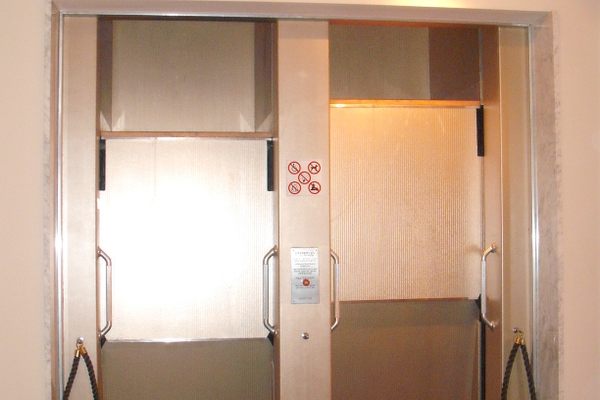




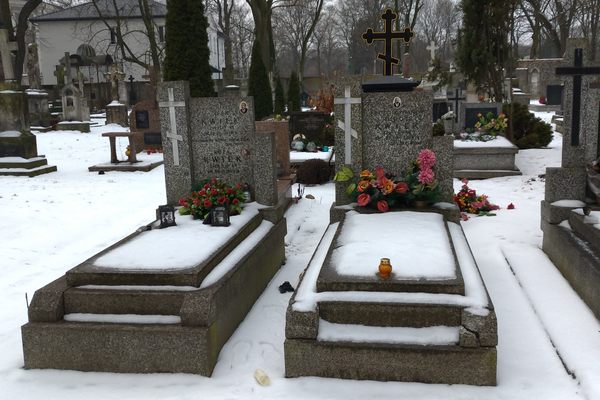
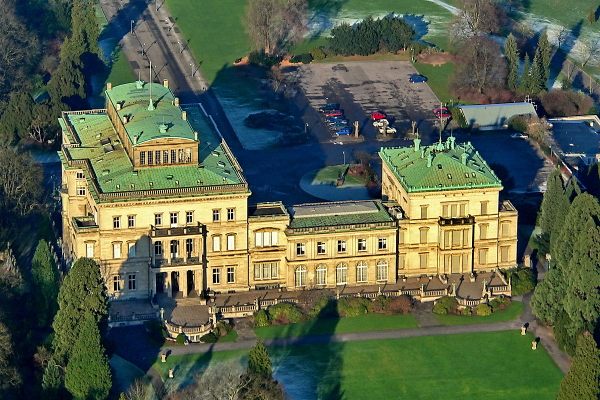

Follow us on Twitter to get the latest on the world's hidden wonders.
Like us on Facebook to get the latest on the world's hidden wonders.
Follow us on Twitter Like us on Facebook